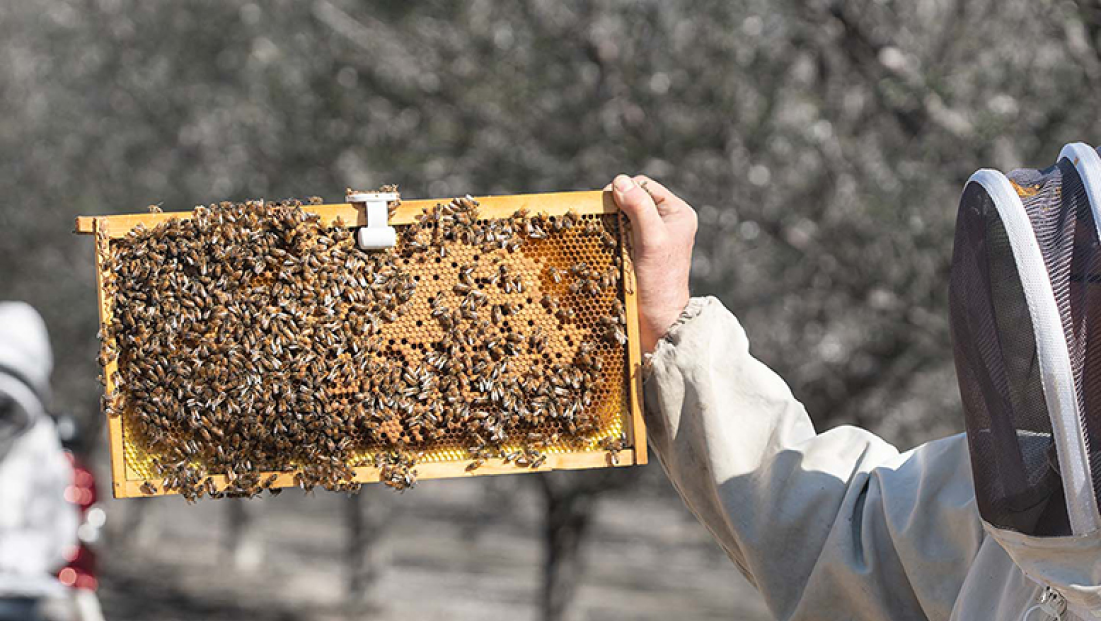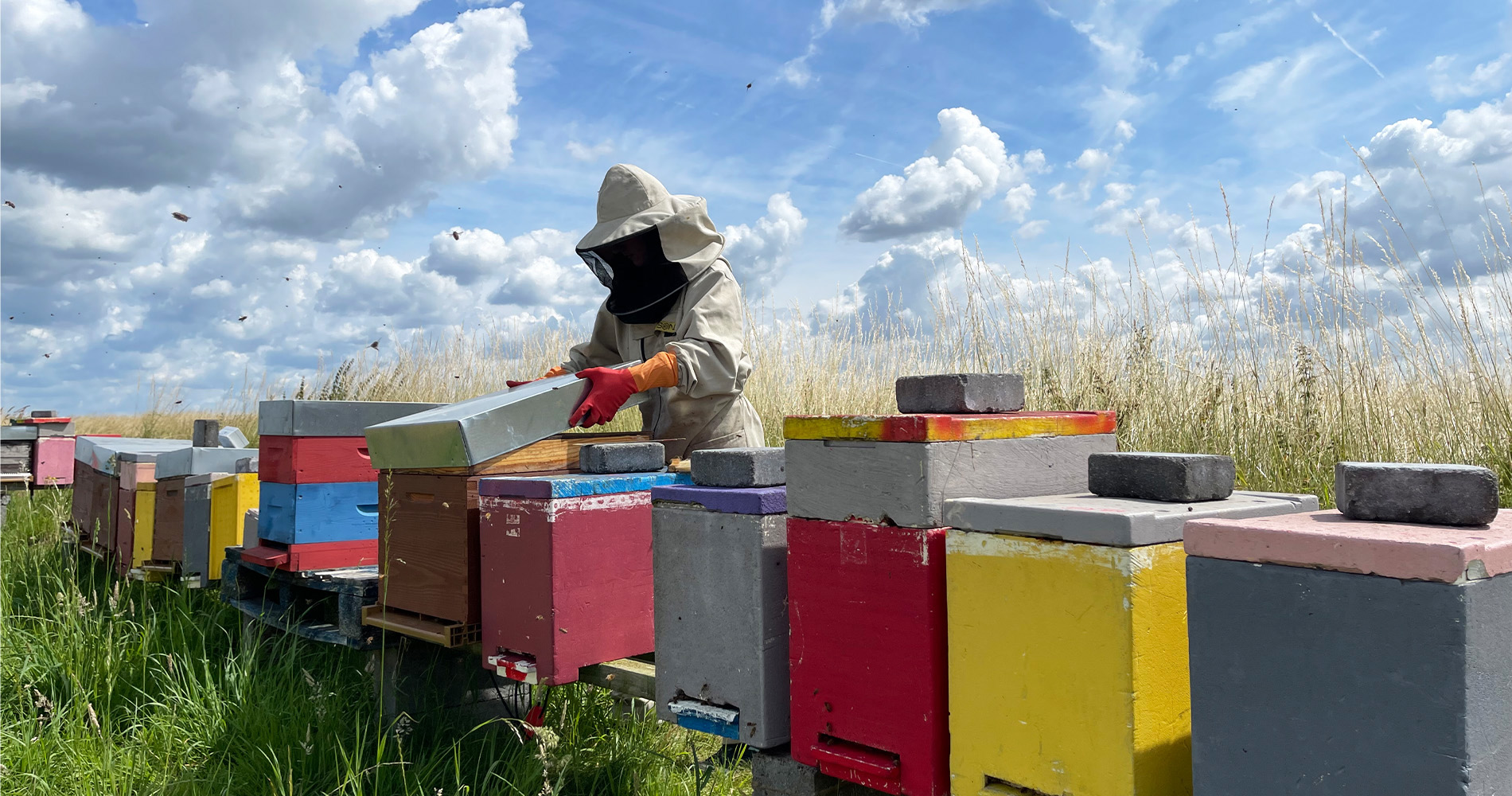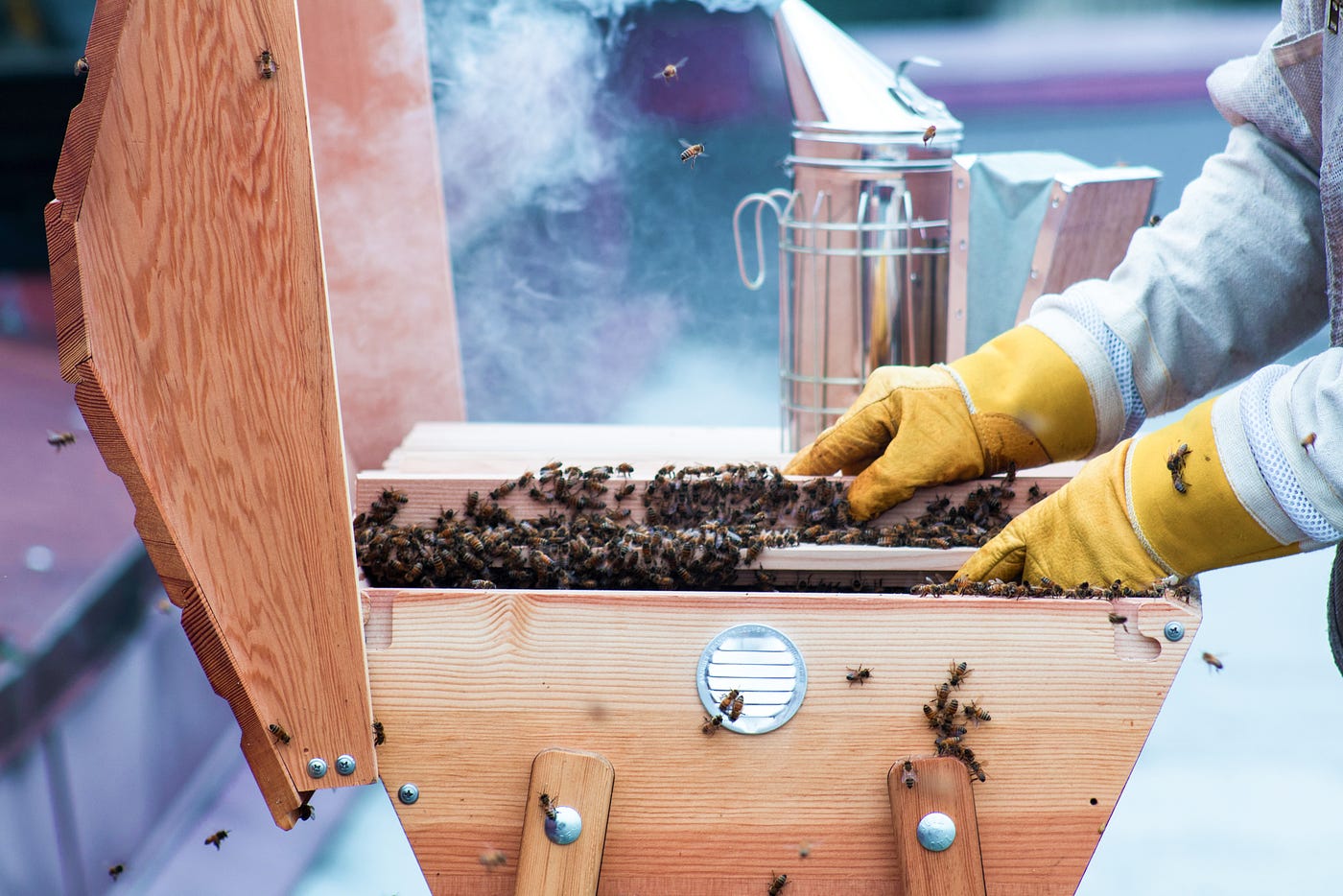Imagine a world without bees. A world where fields are barren and flowers go unpollinated because our small, hardworking pollinators have vanished. Unfortunately, this situation is not too farfetched. With bee populations rapidly dropping owing to issues such as climate change, pesticides, and disease, beekeepers and environmentalists around the world are looking for answers. AI in beekeeping is a technical advance that provides hope for conserving bee populations and protecting our food source.
In this article, we’ll look at how artificial intelligence is altering traditional beekeeping, from hive monitoring to honey production, as well as its potential to prevent colony collapse disorder. Whether you’re a small-scale beekeeper, an agricultural specialist, or simply concerned about the environment, this developing technology has the potential to transform the way we manage and care for our bees.
How AI is Transforming Beekeeping Practices
Artificial intelligence (AI) has emerged as a game changer in beekeeping. By utilizing powerful algorithms, sensors, and drones, AI in beekeeping enables beekeepers to monitor hive health, maximize honey output, and respond swiftly to potential threats. Let’s look at how AI is altering this age-old practice.
1. AI-Powered Hive Monitoring Systems
Historically, beekeepers relied on physical hive inspections, frequently visiting their hives weekly or monthly. However, this strategy can be inefficient because problems may go undetected until it is too late. AI-powered hive monitoring systems provide a solution, collecting real-time data on hive conditions via sensors and cameras.
Key Benefits:
- Remote monitoring of hive temperature, humidity, and bee activity.
- Early detection of pests, diseases, or abnormal behavior.
- Data-driven insights for improving hive productivity
This eliminates the need for small-scale beekeepers to manually inspect their hives on a weekly basis. These technologies can notify you of any possible difficulties via your smartphone or computer, allowing for timely intervention.
2. Predictive Analytics for Bee Health
AI algorithms evaluate massive volumes of data, including hive health measures, meteorological variables, and bee behavior patterns. This enables beekeepers to anticipate and prevent health problems before they become serious. Beekeepers can take proactive measures to protect their colonies by recognizing early signs of sickness or stress.
For example, AI-gathered data may reveal that a hive is stressed as a result of temperature variations. The algorithm can then recommend changes to the hive’s environment, such as improving ventilation or relocating the hive, to improve bee health.
Key features:
- Predictive analytics for preventing disease outbreaks
- Early detection of stressors within colonies
- proactive interventions based on AI advice.
Beekeepers can use predictive analytics to drastically reduce hive losses and increase bee longevity.

3. AI in Driven Precision Beekeeping
AI-powered drones are elevating precision beekeeping to unprecedented heights. Equipped with specialized sensors, these drones can explore huge areas, map ideal foraging paths, and assist beekeepers in determining the best hive placements. What was the result? More effective land usage, more honey production, and healthier bees.
- For commercial beekeepers: Drones powered by artificial intelligence can explore wide areas, recognizing floral resources and assisting in the optimization of pollination tactics.
- For hobbyist beekeepers: Even on a smaller scale, drones can help discover optimal hive locations depending on local vegetation and climatic circumstances.
4. Automated Pest Detection and Management
Pests such as Varroa mites and hive beetles pose significant dangers to bee colonies. AI technologies can now automate the process of detecting and controlling pests. AI-driven pest detection systems use specialized sensors to detect pests with great precision, allowing beekeepers to take focused action.
Key Benefits:
- Early pest detection without invasive inspections.
- less reliance on chemical insecticides.
- Healthy bees and reduced environmental impact
AI can drastically cut the amount of time beekeepers spend on pest management duties while also improving bee health results.

5. Hive Maintenance and Optimization with AI
AI technology extends beyond surveillance and pest management. AI-powered solutions can assist beekeepers in maintaining optimal hive conditions, including as temperature, humidity, and ventilation, by analyzing data in real time and making modifications as necessary. This guarantees that bees are comfortable and productive throughout the season.
Features:
- Real-time assessment of hive conditions
- Automated tips for ensuring optimal bee comfort
- Alerts for potential issues enable quick action.
This level of precision allows beekeepers to optimize honey output while also improving the overall health of their hives, ensuring that the bees thrive.
Pros and Cons
- Enhanced hive monitoring
- Predictive analytics for disease prevention
- Reduced chemical use for pest control
- Optimized honey production
- Initial investment cost
- Learning curve for new technology users
Key Benefits of AI in Beekeeping for Different Audiences
Whether you’re a small-scale hobbyist or a commercial beekeeper with hundreds of hives, AI can provide considerable benefits suited to your specific needs.
Advantages for small-scale and hobbyist beekeepers
- Cost-effective real-time hive monitoring solutions
- User-friendly interfaces deliver meaningful insights without requiring substantial technical understanding.
- Remote monitoring capability can reduce the requirement for frequent physical hive checks.
With AI in beekeeping, amateurs may spend more time with their bees and less time worrying about manual hive management.
Advantages for Commercial Beekeepers
- AI-powered drones and sensors provide increased efficiency in controlling large-scale operations.
- Improved production by optimizing hive placement and pollination pathways.
- Predictive analytics and automated pest management solutions have helped reduce losses from colony collapse.
For commercial operations, implementing AI in beekeeping can result in significant cost reductions and increased overall productivity.

FAQs
How do AI-powered hive monitoring technologies help small-scale beekeepers?
AI-powered hive monitoring devices enable small-scale beekeepers to remotely track hive conditions and identify possible problems early on, including disease outbreaks or insect infestations.
What types of data do AI systems utilize to predict and prevent bee disease?
AI algorithms examine a variety of data elements, such as hive temperature, humidity, bee behavior, and ambient variables, to anticipate potential health issues and intervene before they worsen.
Are AI-powered drones suitable for hobbyist beekeepers, or are they primarily intended for commercial use?
While commercial beekeepers would gain the most from AI in beekeeping, hobbyists can also utilize them to analyze hive layout, floral resources, and overall hive health, making them useful at all scales.
Conclusion
As bees face enormous problems, such as climate change and habitat loss, AI in beekeeping provides a lifeline. By integrating conventional expertise with cutting-edge technology, AI enables beekeepers to be proactive in maintaining their hives.
The capacity to remotely monitor conditions, foresee potential concerns and automate pest treatment guarantees that bees are properly cared for, resulting in healthier colonies and a more sustainable future for beekeeping. Whether you’re a hobbyist or a commercial beekeeper, adopting AI is an investment not only in the health of your hives but also in the sustainability of our entire ecosystem.
